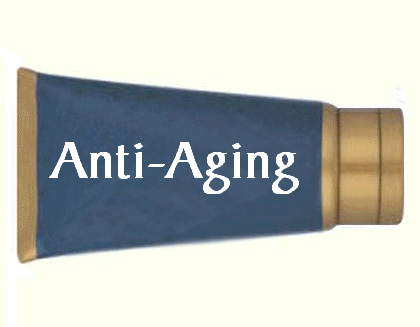
So this week’s post was going to be on the mechanics of ageing. But then I decided to try something different. I entered ‘anti-ageing’ into the trusty search engine. The first 4 posts were all about the different creams available that can ‘eliminate or reduce’ the signs of ageing, but more on that later.
So, what is ageing and are there “visible signs”?
According to some researchers, measuring the ageing process is controversial owing to the fact ‘markers of ageing’ cannot be agreed upon. However, there are obvious physiological signs of ageing – loss of elastin and collagen in the skin, reduced bone density and dental health, declining organ health, and cardiovascular and metabolic changes. At the molecular level this is characterised by reduced ability to repair DNA lesions (or damages to DNA strands) resulting in errors being passed onto new cells, cellular senescence (when cells stop dividing) and shortening of the ends of chromosomes.
However, to most people, the physical sign of ageing is the appearance of wrinkles. This is in fact the most superficial and cosmetic change associated with ageing, but as my internet search proved, it is also the first item that appears when you search for ‘ageing or anti-ageing’.
Anti-ageing solutions (?)
I decided to see what the ‘miracle cures’ for the visible signs of ageing are. I chose 4 at random [all brands withheld]. The first was a serum containing an amino acid sequence that “helps maintains a healthy repair schedule”, the second claimed to be a “replenishing nighttime facial oil with distilled botanicals that visibly restores the appearance of skin by morning”, the third was another “botanical-based” serum; and lastly, a cream containing “the skin’s own coenzyme Q10 and creatine”.
Anti-ageing amino acid sequences
Searching for information on this proved difficult. The “technology” proposed by this company is under numerous patents and searches of the literature proved to less than fruitful. As far as I can elucidate, these amino acid sequences are in fact peptides that supposedly act as cellular messengers. One article states that caution should be used when introducing this technology as these peptides could interfere with normal cellular mechanisms. It should be taken into account that this depends on whether the peptides are actually able to enter cells.
Botanicals
A review on one the products I looked at stated “Despite [brand name]’s claims that this serum works without irritation, it contains several fragrant oils that cause acute irritation…And contains several essential oils known to be photoreactive”.
An in-depth analysis of several studies performed using botanical extracts concluded an overwhelming lack of significance, and that most extracts failed to penetrate the dermis, or to have a long-lasting effect on the skin.
Coenzyme Q10 (coQ10) and creatine
CoQ10 is a proven anti-oxidant able to inhibit stress caused by oxidation (see post on Antioxidants for more information) from UVA and UVB. However its ability to reduce wrinkles has still not been proven conclusively. Although it has been shown to reduce oxidation in the dermis, the research has been conducted to determine whether it can reduce the damaging effects of UV exposure. Creatine supplies energy to cells, and absorption of external creatine by skin cells has been shown to improve action against oxidants produced by UV.
Thus while coQ10 and creatine are biologically effective they do not reduce wrinkles per se, but reduce damage to cells caused by UV exposure.
Conclusion
It seems that most of the “age-defying” ingredients are in fact ineffective against wrinkles, however there is some evidence that UV damage can be reduced. Most moisturisers just provide hydration to cells, thereby “plumping” skin and reducing the physical appearance of wrinkles whilst not removing them permanently. In fact, it seems that wearing sunscreen is probably the smartest thing to do. They are generally mositurising whilst also protecting against damage caused by UV.
Food for thought
Why are cosmetic signs of aging (i.e. wrinkles) frowned up or regarded with distaste? Ageing is a natural process, and as they say, “with age comes wisdom”.
Glossary
Amino acids: natural molecules consisting of nitrogen, carbon and oxygen
Peptides: small compounds consisting of amino acids
Photoreactive: can be activated by UV exposure producing byproducts that can be inflammatory
Sources
www.pnas.org/content/112/30/E4104.full
Lenz, Holger et al. Journal of Investigative Dermatology , Volume 124 , Issue 2 , 443 – 452
Here are are my 2 trusted review websites. Both are upfront, honest and informative.
http://www.beautybythegeeks.com/about/
http://www.carolinehirons.com/
LikeLiked by 1 person